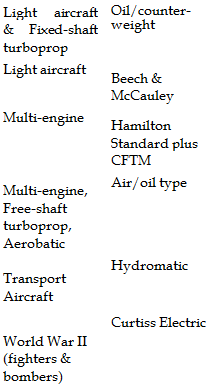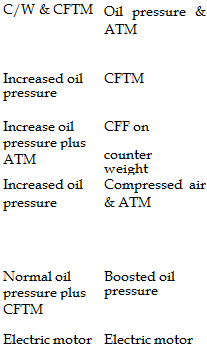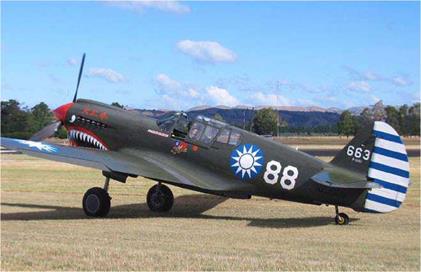The Curtiss Electric Propeller
The Curtiss Electric Propeller was very popular during WW II, and was used on many American single-engine fighters and light twin-engine bombers.
The Curtiss prop’s CSU worked on a different principle to the CSU’s mentioned above, using an electric motor to turn the blades either way. The reversible electric motor is driven by power from the aircraft’s battery and AC electrical system. The operation of the governor opens and closes circuits to drive the constant-speed unit in the required direction. Through a system of gears connecting the electric motor to the blades, the blade angle is changed. A brake holds the blade angle constant and then releases its hold whenever the electric motor is activated. The fine and coarse pitch limit stops are also electrically operated, with the addition of a mechanical fine/flat pitch limit stop to prevent reverse pitch being inadvertently selected.
|
The Curtiss P-40 was equipped with an Allison V-1710 engine powering a Curtiss Electric, three-blade prop. |
It is interesting to note, the Lockheed YC-130 Hercules transport prototype and the first ten production aircraft were fitted with Curtiss-Wright, three-blade electric propellers. Powered by the Allison T56 turboprop engine, the props rotated at a constant 1108 RPM; the thrust was varied by adjusting the prop’s blade angle. However, a problem with the electrically operated governor caused the CSU to overspeed or ‘hunt’ in either direction. This resulted in uneven thrust being produced and caused the aircraft’s nose to yaw from side to side. Overheating of the gearbox required frequent engine shut-downs. The problem with the Curtiss-Wright props was eventually corrected but not before a change was made to hydraulic CSU’s made by Aero Products, Allison’s subsidiary company. Subsequent Hercules models from the C-130B onwards were equipped with Hamilton Standard three, and later four-blade propellers. However, to follow the trend of modern turboprops aircraft, the new C-130J models have a
new type of free-shaft turboprop engine – a Rolls Royce AE 2100 of 4637 SHP driving six-blade composite props.
The following table briefly lists the different constant – speed unit types and their method of operation under normal forward thrust conditions:
 |
 |
Aircraft Class Type Fine/flat pitch Coarse Pitch
Abbreviations used in the above list:
C/W = Counterweights
ATM = Aerodynamic turning (or twisting) moment CFTM = Centrifugal turning moment.












